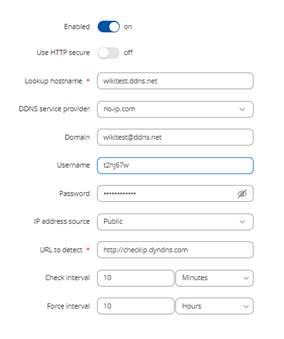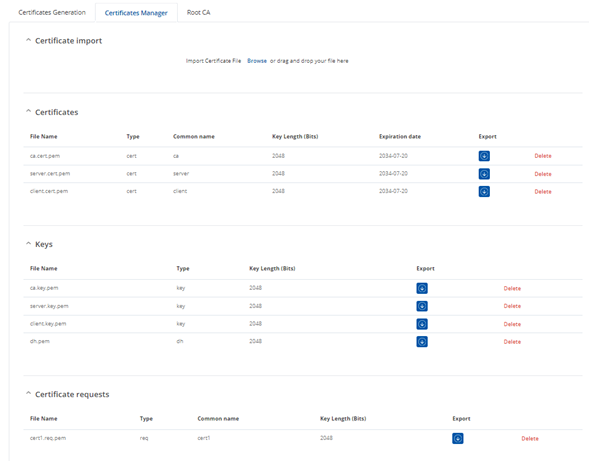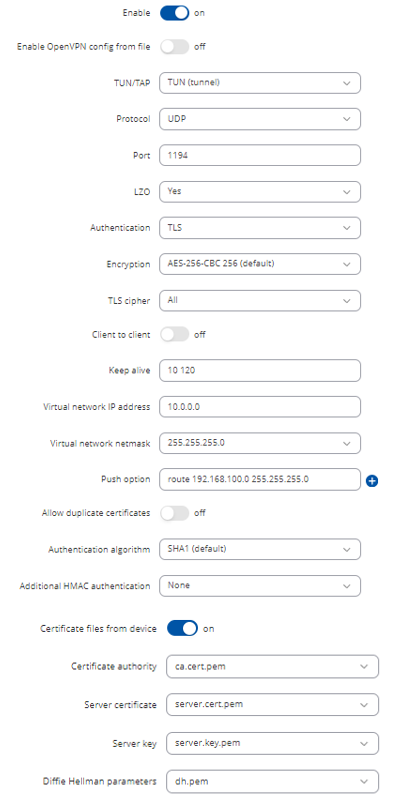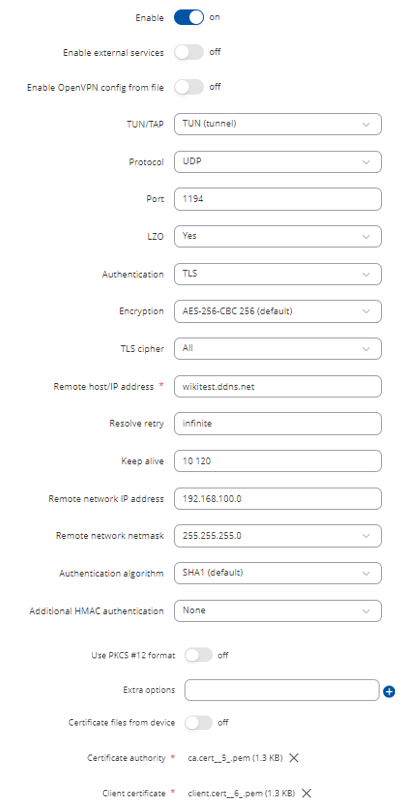OnboardingTest: Difference between revisions
No edit summary |
No edit summary |
||
| Line 32: | Line 32: | ||
<ol> | <ol> | ||
<li>Go to the device <I> '''WebUI''' → '''Network''' → '''Firewall'''→ '''Port Forward'''</i> and set up your own parameters, the external port will be '''18000''' and internet port will be '''80''' (HTTP port).<br> | <li>Go to the device <I> '''WebUI''' → '''Network''' → '''Firewall'''→ '''Port Forward'''</i> and set up your own parameters, the external port will be '''18000''' and internet port will be '''80''' (HTTP port).<br> | ||
[[File:Picture111.png|border|class=tlt-border]]<br> | |||
Revision as of 13:51, 25 July 2024
Introduction
In this configuration example, you will be able to follow the steps to set up devices with RUTOS using Dynamic DNS, OpenVPN, and port forwarding. The purpose is to combine these features to manage a remote device, as shown in the image below.
RUTX08 configuration
Dynamic DNS configuration on no-ip.com
Go to the website [1], log in or create an account, and create a Hostname with the public IP that has been assigned to us. 
Dynamic DNS configuration on device
- Go to the device WebUI → System → Dynamic DNS and set up your own parameters.

You will see that the status of this instance will be Running.
You can learn more about DDNS Configuration here.Certificate Generation
The easiest way to generate certificates and keys is by using the Certificate Generation page that is available in the device's WebUI:
- Go to the device WebUI → Administration → Certificates and push button Generate.

You will have the certificates available in the Certificates Manager tab. Download the authority certificate and the client certificates, as you will need to upload them to the device that has the VPN client role.
You can learn more about DDNS Configuration here.
OpenVPN as a server configuration on device
- Go to the device WebUI → Services → VPN→ OpenVPN and set up your own parameters.

You will observe that the OpenVPN service as a server will be in a Running state.

You can learn more about OpenVPN Configuration OpenVPN_configuration_examples.
RUTX10 configuration
OpenVPN as a client configuration on device
- Go to the device WebUI → Services → VPN→ OpenVPN and set up your own parameters.

. Make sure the Certificates from device button is turned off, and upload the files you downloaded from the server device.
. You will observe that the OpenVPN service as a client will be in a Running state.

Port Forward configuration on device
- Go to the device WebUI → Services → VPN→ OpenVPN and set up your own parameters.
- Go to the device WebUI → Services → VPN→ OpenVPN and set up your own parameters.
- Go to the device WebUI → Administration → Certificates and push button Generate.
